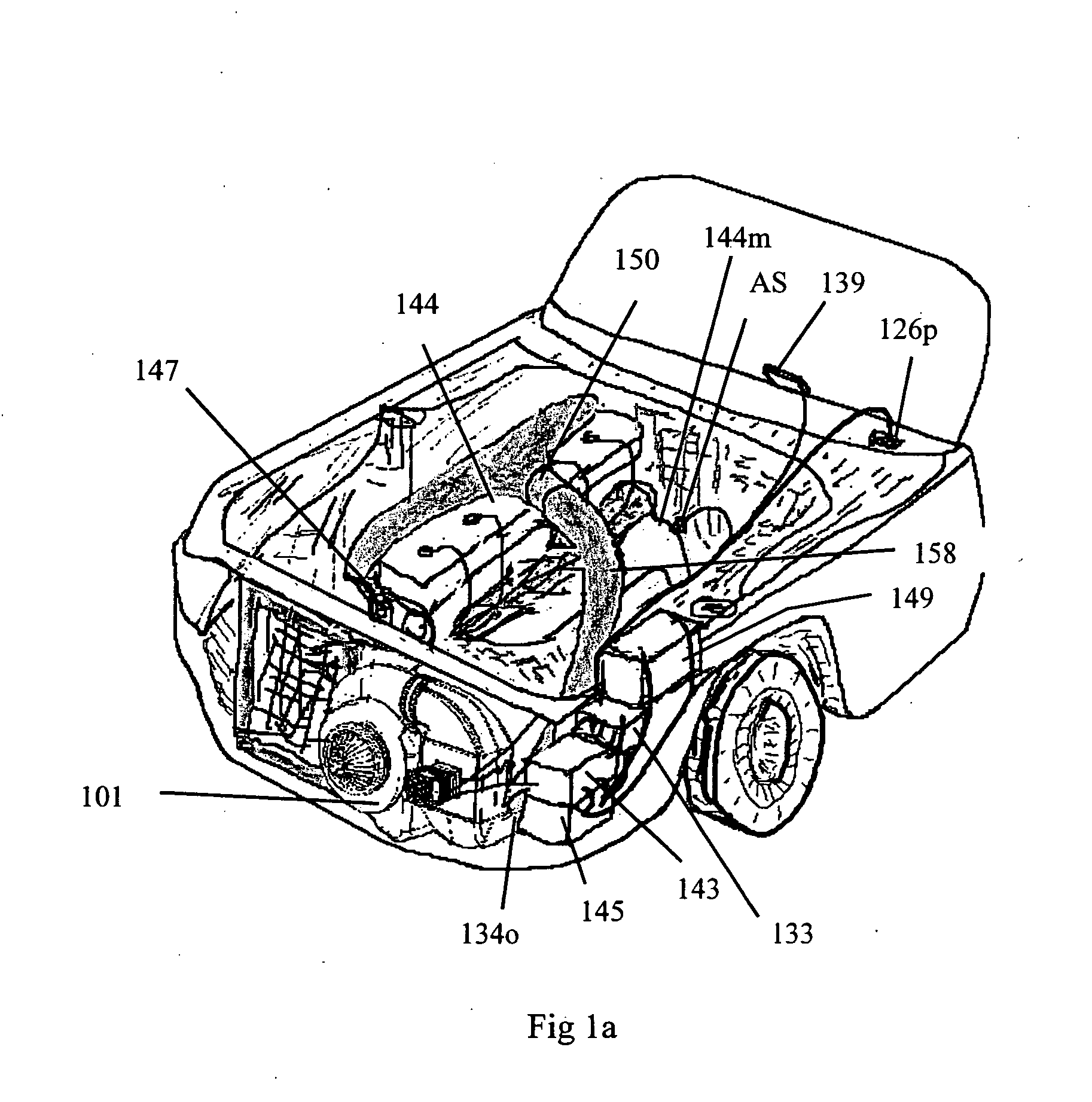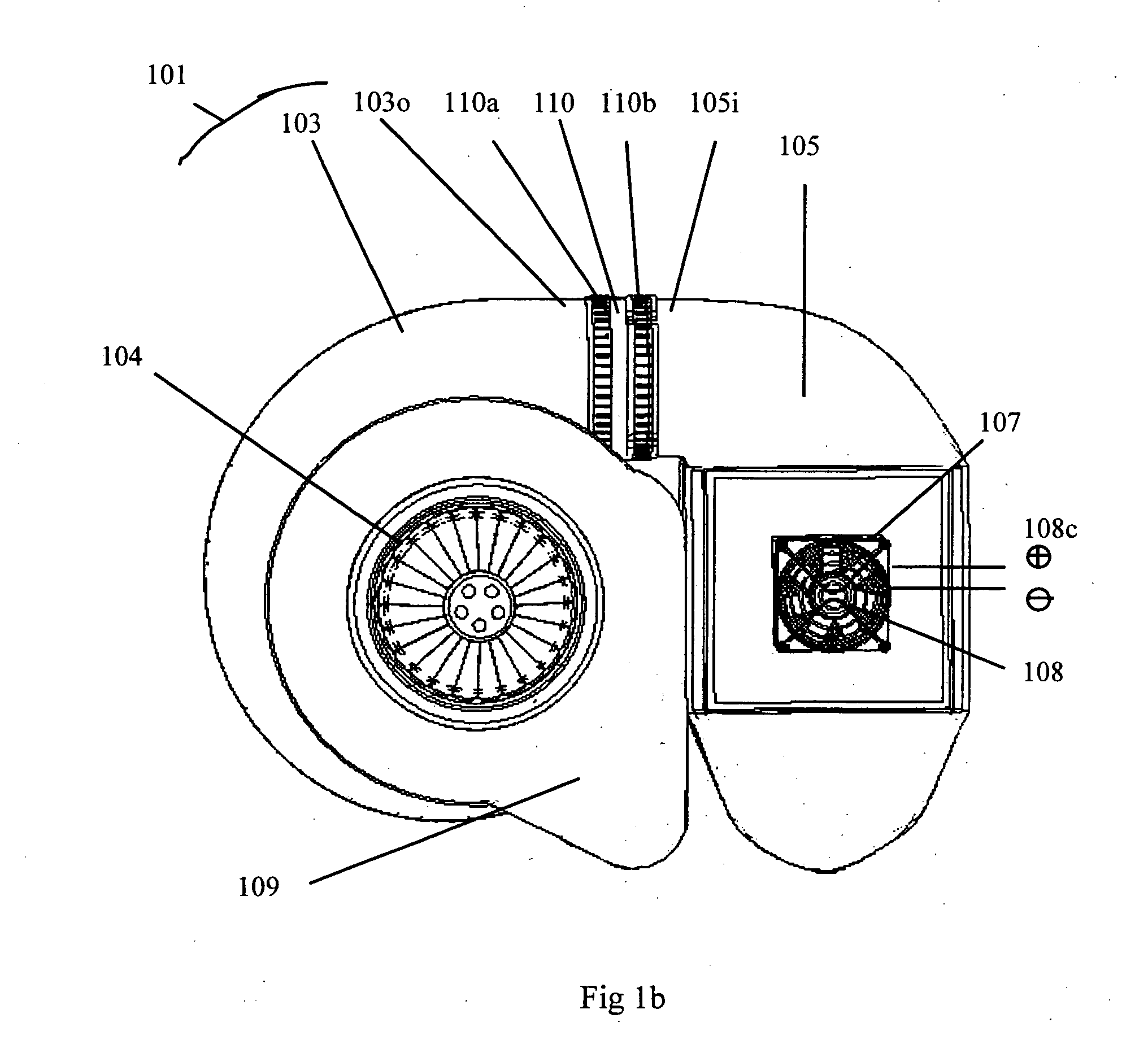On demand boost conditioner (ODBC)
a technology of boosting conditioner and incoming air compressor, which is applied in the direction of combustion air/fuel air treatment, machines/engines, instruments, etc., can solve the problems of high heat soak, high cost, and high cost, and achieve the effect of low cos
- Summary
- Abstract
- Description
- Claims
- Application Information
AI Technical Summary
Benefits of technology
Problems solved by technology
Method used
Image
Examples
Embodiment Construction
[0057]FIG. 1a is a perspective frontal view of the preferred embodiment of my invention, the On Demand Boost Conditioner (ODBC) 101 mounted in a host vehicle. The conditioner 101 is shown mounted next to the vehicle's radiator, in front of the vehicle firewall. This area of mounting conditioner 101 avoids heat soak disadvantages when compared to mounting conditioner 101 in an engine compartment behind firewall. Components of the system are shown in FIG. 2 for system perspective. Returning to FIG. 1a the conditioner 101 has an output 134o shown connected with an inlet hose 158 to a host vehicle engine 144 at a throttle body 150. The vehicle has an exhaust manifold 144m that is shown with an advanced sensor AS attached. Also shown are a vehicle battery 149, an alternator 147, an engine control unit (ECU) 126p connector, a display 139, a smart controller 133, a power buffer 143, and an auxiliary power 145. The system configuration is shown for discussion purposes as actual mounting in ...
PUM
 Login to View More
Login to View More Abstract
Description
Claims
Application Information
 Login to View More
Login to View More - R&D
- Intellectual Property
- Life Sciences
- Materials
- Tech Scout
- Unparalleled Data Quality
- Higher Quality Content
- 60% Fewer Hallucinations
Browse by: Latest US Patents, China's latest patents, Technical Efficacy Thesaurus, Application Domain, Technology Topic, Popular Technical Reports.
© 2025 PatSnap. All rights reserved.Legal|Privacy policy|Modern Slavery Act Transparency Statement|Sitemap|About US| Contact US: help@patsnap.com



